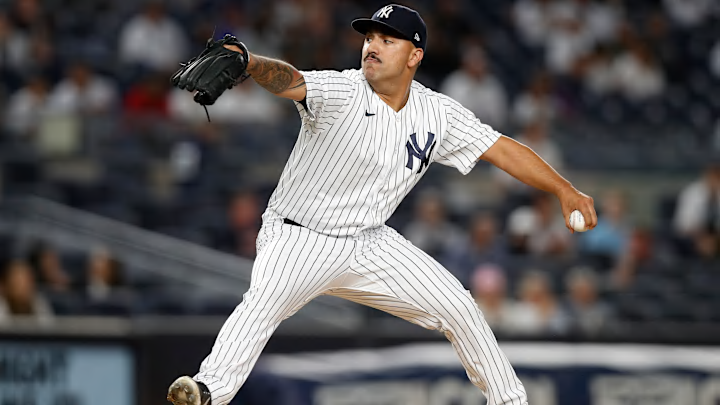2. Edward Cabrera
The Miami Marlins' Edward Cabrera presents an interesting case. Cabrera is only 25, he has 5 more years of control, and he has been as high as #2 on the Marlins prospect list as recently as 2022. However, he has had a tough time readjusting to major-league batters after a strong performance last year in the rotation.
In 2022, Cabrera threw 71.2 innings. Across 14 starts, he was able to finish the year with a 3.01 ERA, 4.59 FIP, 1.074 WHIP, and he also struck out just over 9 batters per nine innings. His ERA+ was a whopping 134, and he didn't allow many hits per nine innings, only 5.5 hits. Most impressively, however, was his ability to keep opposing batting averages low. The expected batting average against him was .209 and the actual batting average against him was .177.
This year, however, Cabrera hasn't quite been himself. He is striking out more batters (10.9 per nine innings), but he is allowing far more baserunners with a 1.468 WHIP and 6.1 walks per nine innings. He is throwing his curveball more often this year, and batters are hitting .240 against it compared to .164 last year. Additionally, Cabrera is allowing ground balls. Last year, the shifts would have helped ease the damage these grounders had against him. This year, without the shift, the once-groundball outs have turned into hits.
Because of Cabrera's age and his team control, it would take a pretty impressive package to snag the righty out of the Dominican Republic. The Cardinals have plenty of young talent in the minors who are blocked at the majors. The position-player depth in the majors also allows the team to move some pieces to upgrade the starting rotation.
